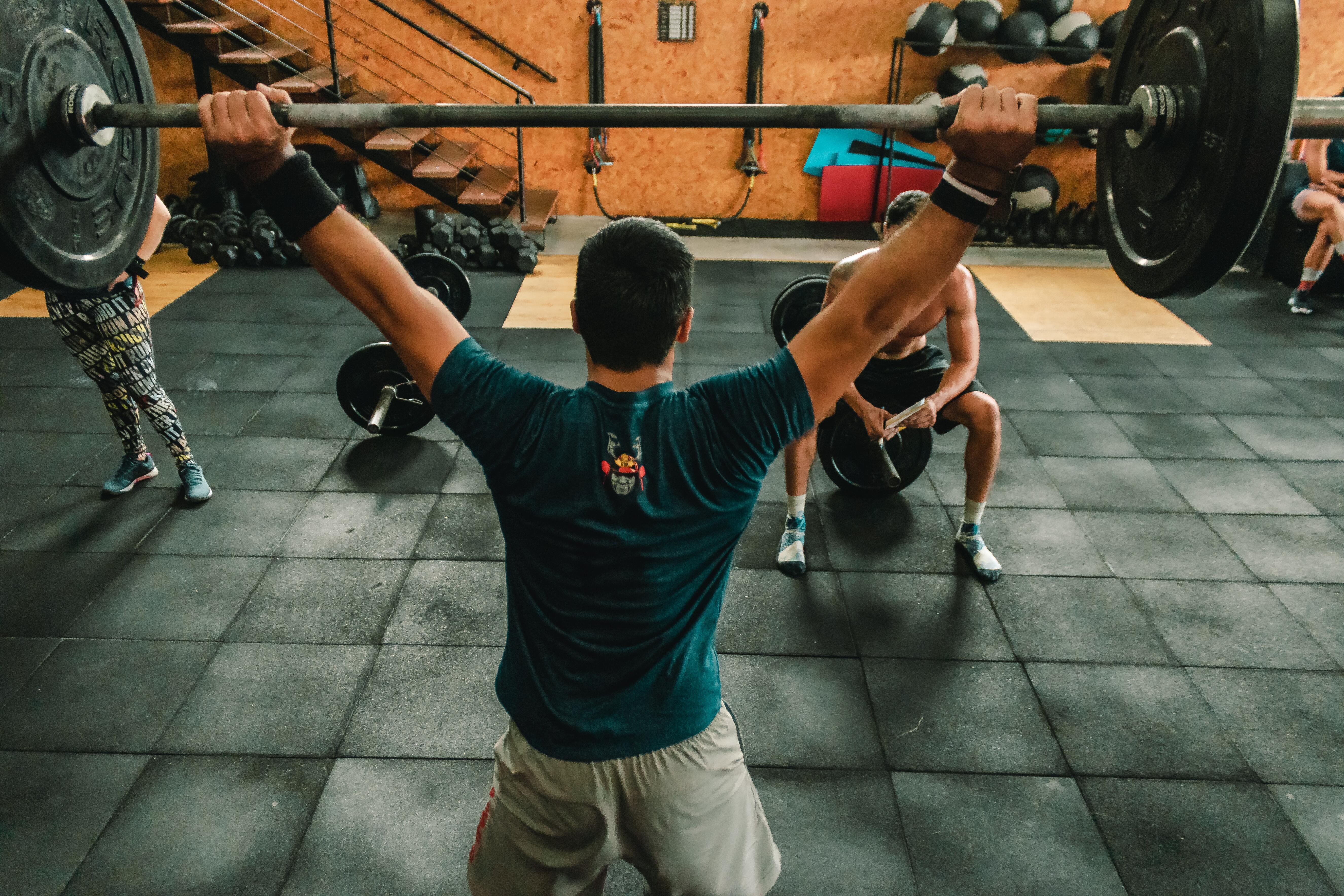People go to the gym for various reasons; gain muscle, cut muscle mass, and lose weight. These goals and many other fitness activities have in common the mindset of trying to burn calories.
It’s important to understand how the body can burn calories throughout exercise, what methods are the most effective, and specific examples that people can use to implement these ideas into their daily lives.
What Causes the Body To Burn Calories While Exercising?
Before we dive into what exactly causes calories to “burn,” let’s first identify what exactly a calorie is and why it’s in our body, to begin with.
Calories are measures of energy that your body requires to perform basic human functions every day. We obtain calories through the food we consume, which in turn provides us energy.
When exercising, your muscles require more energy than needed. Your body will send messages to its fuel sources to fulfill that energy your muscles require. One calorie is equal to the amount of heat required to raise the temperature of one gram of water from 14.5 degrees Celsius to 15.5 degrees Celsius (58.1 to 59.9 degrees Fahrenheit).
The calorie you may be familiar with as a measurement tool refers to one kilocalorie (1,000 calories). For simplicity and understanding, “C” just refers to a kilocalorie to make the math easier for people reading the food labels. For example, if an item is listed with ten calories, it contains ten kilocalories (also known as 10,000 calories). This is supposed to be identifiable for those looking to burn these with fitness and exercise.
If you eat 10 calories, you must complete exercise that is equal to that same amount of calories to avoid gaining weight.
How Your Muscles Scientifically Burn Calories
To break down the process even further, your muscles contract when you work out - meaning they’re brought closer and tighter together than they normally are. These contractions are fueled by something called adenosine triphosphate, also known for short as “ATP.”
ATP is made up of adenosine and three phosphorus molecules. When the mitochondria of muscle cells break down phosphorus molecule bonds in ATP, energy is released as a result. This is the energy that goes on to fuel your muscles while performing an exercise. This release itself is what we measure in calories.
Your body is always breaking down the food you eat once it enters your system. Approximately half of the nutrients are broken down into energy that can be put to use. Enzymes break down proteins, carbs, and fats in the body’s digestive system, whether you’re exercising or resting at the time.
During rest, some of these nutrients will go to storage. While exercising, most of the nutrients travel through the bloodstream instead to your muscles, where the energy production cycle involving ATP occurs.
To summarize the entire process, it’s important to eat calories and exercise to best efficiently turn them into energy and create muscle.
Here are some excellent workout methods for you to try that will help!
Exercises That Burn Calories
In terms of the most efficiency, running might be your best option. Whether you want to do sprints or distance jogging, this activity burns the most calories per hour.
Although this might be the most effective method, many people aren’t into running or have pre-existing health conditions that prevent them from doing this exercise (e.g., asthma, heart conditions).
A wide array of calorie-burning exercises can be done as substitutes if running isn’t your forte. In general, cardio-based training tends to deliver the best results, as your goal is to optimally get your heart rate to a high enough rate that it will burn calories and fat due to how quickly it’s pumping blood. Other examples include swimming, cycling, rowing, ski training, stair-stepping, etc.
How Dieting Comes Into Play
According to the Center for Disease Control and Prevention (CDC), the average 154-pound individual can burn between 140-295 calories in roughly 30 minutes of cardio exercise.
The first step of creating your new routine is to identify roughly how many calories you want to burn per workout session based on your diet.
To lose weight, it takes the burning of 3,500 calories more than what your body needs to get rid of a single pound. Keep this in mind if you set goals on how many pounds you want to lose throughout a specific time. It becomes easier to track this sort of progress if you also regularly monitor the food you put into your body.
If your daily caloric requirement falls around 2,200 - you need to reduce your consumption by 500 calories per day and burn an extra 500 through some form of exercise. A calorie deficit of approximately 1,000 will result in the loss of about one to two pounds, give or take.
High-Intensity Interval Training (HIIT Workouts)
High-intensity interval training is a fantastic method to burn calories at a rapid rate. This training consists of multiple cardio methods combined into one.
Mix in high-intensity, short sets of cardio with “resting periods'' that don’t allow you to stand still or sit down. The difference that HIIT training has from other traditional workout methods lies in this rest skipping algorithm.
By doing moderate to low cardio during supposed rest times, your body is forced to continue pumping blood at a higher rate than its resting heart rate, but it’s not as vigorous as it can be. This will build up your baseline for the number of calories and fat you burn while working out and allow your body to continue doing so hours after you leave the gym!
The best part about HIIT workouts and even cardiovascular exercises, in general, is the simplicity and convenience that go along with them. For the most part, these exercises all accomplish the same goal of raising your heart rate for an extended period and building up a nice sweat.
One day you could decide to run for thirty minutes. In contrast, the following day, you could hop into a HIIT workout training session where you hop on the rowing machine for short three-minute high intense bursts followed by longer, easier “resting” sessions on the elliptical in between.
If you’re interested in getting involved in cardio at home instead of traveling to a gym every day, there are plenty of options as well.
For those of you looking to incorporate cardio at home, try one of the new dual-function machines from EnergyFit! Their new Ski-Row Air and Ski-Row Air+PWR specialize in cardio functionality as both a rower and ski trainer. They can also exclusively be used for HIIT workouts as well!
Takeaways
Exercise of any kind will technically play the most significant part in getting your body to burn calories. Other factors go into the precise number you can cycle through each time you workout. The duration of whatever exercise you decide to do plays a huge part; the longer you’re working out, the more calories you’re going to end up burning as a result.
The pace you’re going will also determine how many calories you can burn in a particular session. The faster your pace is, the more efficiently the calories in your body will be expended into energy, but this doesn’t mean less pace won’t positively help you as well.
Intensity comes into play as well - the level of vigor you exert into your workouts will matter when measuring the number of calories your body is working. The harder you’re pushing your body through a particular exercise, the more calories you’re going to burn as a result.
One final factor that comes into play is the dimensions and weight of your body.
Generally speaking, the more a person weighs relative to their height, the more calories they’ll burn in a given workout exercise.
The most important thing to remember is that exercise is a good thing, especially when burning calories. The more you’re doing this, the healthier you’re going to be.
Sources:
How much physicAdenosine triphosphateal activity do adults need? | CDC





Leave a comment
All comments are moderated before being published.
This site is protected by reCAPTCHA and the Google Privacy Policy and Terms of Service apply.